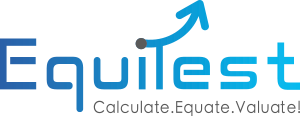Tips for Writing an Effective Valuation Report
MediaFor more detailed insights on writing an effective valuation report, including step-by-step guidance on financial analysis, subjective adjustments, and professional presentation, check out the full article. Unlock the secrets to creating valuation reports that are both accurate and persuasive, helping you achieve your business objectives with confidence.
Tips for Writing an Effective Valuation Report
Outline
- Introduction
- Importance of Valuation Reports
- Purpose of the Article
- Understanding Valuation Reports
- Definition of a Valuation Report
- Types of Valuation Reports
- Preparing for the Valuation
- Gathering Necessary Information
- Setting Objectives
- Choosing the Right Valuation Method
- Market Approach
- Income Approach
- Asset-Based Approach
- Structuring the Valuation Report
- Title Page
- Table of Contents
- Executive Summary
- Detailing the Subject of the Valuation
- Description of the Business or Asset
- Industry Analysis
- Conducting Financial Analysis
- Historical Financial Statements
- Projections and Forecasts
- Applying the Valuation Method
- Market Comparables
- Discounted Cash Flow Analysis
- Net Asset Value
- Adjusting for Subjective Factors
- Market Conditions
- Management Quality
- Economic Environment
- Ensuring Accuracy and Consistency
- Cross-Verification of Data
- Reconciliation of Valuation Results
- Writing the Executive Summary
- Key Findings
- Valuation Conclusion
- Incorporating Visual Aids
- Charts and Graphs
- Tables and Diagrams
- Reviewing Legal and Compliance Requirements
- Adhering to Standards
- Disclosure of Assumptions
- Proofreading and Editing
- Grammar and Syntax
- Consistency in Terminology
- Conclusion
- Recap of Key Points
- Final Thoughts
- FAQs
Article
Introduction
In the realm of finance and business, valuation reports hold a pivotal role. Whether you're considering an acquisition, seeking investment, or simply assessing the worth of an asset, a well-crafted valuation report is indispensable. This article aims to guide you through the essential tips for writing an effective valuation report, ensuring that your document is comprehensive, accurate, and compelling.
Understanding Valuation Reports
Definition of a Valuation Report
A valuation report is a detailed analysis that estimates the value of an asset, business, or company. It encompasses various methods and approaches to determine an objective and fair market value.
Types of Valuation Reports
Valuation reports can vary depending on their purpose. Common types include business valuations, real estate appraisals, machinery and equipment valuations, and intangible asset valuations. Each type requires a tailored approach to meet specific needs.
Preparing for the Valuation
Gathering Necessary Information
Before diving into the valuation process, it's crucial to gather all relevant information. This includes financial statements, market data, industry reports, and any other pertinent documents.
Setting Objectives
Clearly define the objectives of the valuation. Are you valuing a business for sale? Determining the worth of an investment? Each objective will influence the choice of valuation method and the overall approach.
Choosing the Right Valuation Method
Market Approach
The market approach involves comparing the subject asset or business to similar entities that have been sold recently. This method relies heavily on market data and comparables.
Income Approach
The income approach estimates value based on the future income the asset or business is expected to generate. This often involves discounted cash flow (DCF) analysis, where future cash flows are projected and then discounted to their present value.
Asset-Based Approach
This approach determines value by calculating the net asset value (NAV) of the business or asset. It considers the total assets minus the total liabilities, providing a snapshot of the entity's worth.
Structuring the Valuation Report
Title Page
The title page should include the report's title, the date, the preparer's name, and any relevant logos or branding.
Table of Contents
A table of contents helps readers navigate the report easily, especially if it is lengthy and detailed.
Executive Summary
The executive summary provides a concise overview of the valuation report, highlighting key findings, methodologies, and conclusions. It should be brief yet informative.
Detailing the Subject of the Valuation
Description of the Business or Asset
Provide a thorough description of the business or asset being valued. Include information on its history, operations, products, and services.
Industry Analysis
Conduct an industry analysis to understand the market context in which the business or asset operates. Highlight trends, competitive landscape, and regulatory environment.
Conducting Financial Analysis
Historical Financial Statements
Analyze historical financial statements to assess past performance. This includes income statements, balance sheets, and cash flow statements.
Projections and Forecasts
Develop projections and forecasts based on historical data and industry trends. This will form the basis for income-based valuation methods like DCF.
Applying the Valuation Method
Market Comparables
For the market approach, identify and analyze comparable transactions. Adjust for differences to ensure an accurate comparison.
Discounted Cash Flow Analysis
In the income approach, conduct a DCF analysis. Project future cash flows and discount them to present value using an appropriate discount rate.
Net Asset Value
Calculate the NAV by subtracting total liabilities from total assets. This approach is particularly useful for asset-intensive businesses.
Adjusting for Subjective Factors
Market Conditions
Consider current market conditions and how they might impact the valuation. Economic cycles and market trends can significantly affect value.
Management Quality
Evaluate the quality and stability of the management team. Effective leadership can enhance the value of a business.
Economic Environment
The broader economic environment, including factors like inflation rates, interest rates, and economic growth, should also be taken into account.
Ensuring Accuracy and Consistency
Cross-Verification of Data
Cross-verify data from multiple sources to ensure accuracy. Inconsistent or incorrect data can undermine the credibility of the valuation.
Reconciliation of Valuation Results
If using multiple valuation methods, reconcile the results to arrive at a final valuation. This involves comparing outcomes and making necessary adjustments.
Writing the Executive Summary
Key Findings
Summarize the key findings of the valuation. Highlight the most important data points and insights.
Valuation Conclusion
Provide a clear and concise valuation conclusion. State the final estimated value and the rationale behind it.
Incorporating Visual Aids
Charts and Graphs
Use charts and graphs to present data visually. This makes complex information more digestible and engaging for readers.
Tables and Diagrams
Include tables and diagrams to organize data and illustrate key points. Visual aids can significantly enhance the readability of your report.
Reviewing Legal and Compliance Requirements
Adhering to Standards
Ensure the valuation report adheres to relevant standards and guidelines. This may include industry standards or legal requirements.
Disclosure of Assumptions
Disclose all assumptions made during the valuation process. Transparency is crucial for credibility and legal compliance.
Proofreading and Editing
Grammar and Syntax
Proofread the report for grammatical and syntactical errors. A polished report reflects professionalism and attention to detail.
Consistency in Terminology
Maintain consistency in terminology throughout the report. This ensures clarity and prevents confusion.
Conclusion
Crafting an effective valuation report involves meticulous preparation, a thorough understanding of valuation methods, and careful attention to detail. By following these tips, you can create a report that is not only accurate and comprehensive but also engaging and persuasive.
FAQs
- What is the primary purpose of a valuation report?
- A valuation report aims to estimate the value of an asset, business, or company for various purposes, including sale, investment, or financial reporting.
- How do I choose the right valuation method?
- The choice of valuation method depends on the specific circumstances and objectives of the valuation. Common methods include the market approach, income approach, and asset-based approach.
- Why is an industry analysis important in a valuation report?
- An industry analysis provides context by highlighting market trends, competitive landscape, and regulatory environment, which can significantly impact the valuation.
- What should be included in the executive summary of a valuation report?
- The executive summary should include a brief overview of the valuation process, key findings, methodologies used, and the final valuation conclusion.
- How can I ensure the accuracy of my valuation report?
Ensure accuracy by cross-verifying data, adhering to standards, disclosing assumptions, and proofreading the report thoroughly.
Related items
Media
(To unmute the video clip, click the video)


